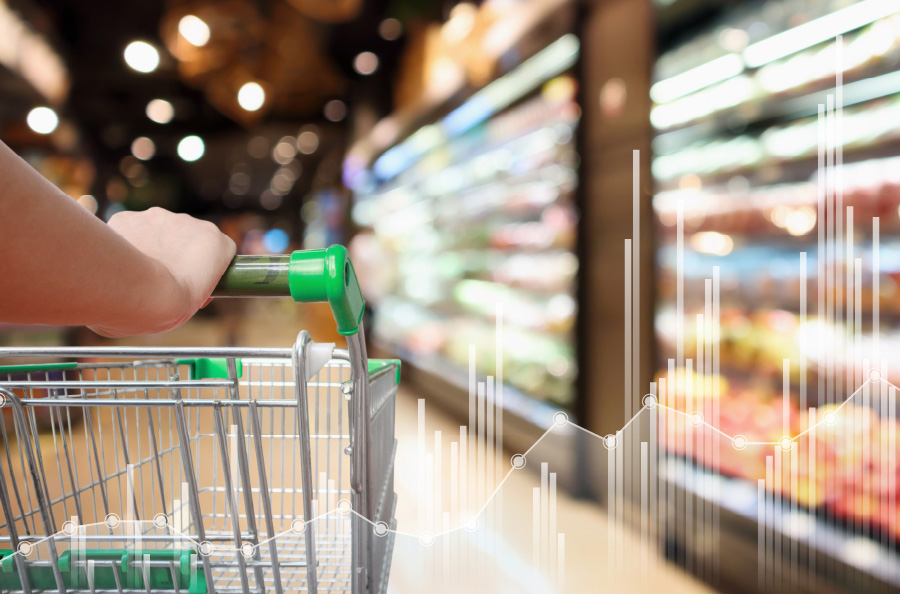Sponsored content
So, you’ve followed the advice of the experts and made strategic investments in automation technology and data software. Now you find yourself with a wealth of valuable data. The question is, what should you do with it? In the highly competitive landscape of the grocery retail industry, data-driven decision-making has become an indispensable factor for achieving success. Effectively leveraging data insights empowers grocery retail stores to gain a competitive edge, optimize operations and deliver exceptional customer experiences.
In this step-by-step guide, we will explore how grocery retail stores can seamlessly integrate data insights into their business strategy, unlocking the full potential of their data to thrive in today’s dynamic market.
Step 1: Define clear business objectives
To begin the journey of data integration, start by aligning data insights with your grocery retail store’s specific objectives. Identify key areas where data can make a significant impact, such as:
- Optimizing inventory management: Analyze inventory data to identify slow-moving products, reduce overstock situations and ensure products are available when customers need them.
- Improving customer loyalty: Utilize customer purchase data and loyalty program insights to understand customer preferences, shopping habits and tailor personalized promotions and offers.
- Enhancing product assortment: Analyze sales data to identify top-selling products and optimize product assortment to meet customer demands and preferences.
Step 2: Engage grocery retail stakeholders
Data integration is a collaborative effort that involves key stakeholders across the organization. Engage store managers, marketing teams, supply chain managers and other relevant departments. Collaborate with them to understand their specific needs and challenges, and how data insights can support their decision-making processes.
Step 3: Translate data insights into actionable strategies
Data insights must go beyond numbers and charts to drive tangible actions and strategies.
For example:
- Utilize customer feedback data to improve the in-store experience, addressing pain points and enhancing customer satisfaction.
- Use sales data to plan promotional campaigns, optimize pricing strategies and forecast future demand to prevent stockouts.
Step 4: Develop data-driven KPIs for grocery retail
Establish data-driven Key Performance Indicators (KPIs) that are specific to the grocery retail industry. Some essential KPIs include:
- Sales per Square Foot: Measure the revenue generated per square foot of retail space, indicating how effectively the store utilizes its floor area.
- Customer Retention Rate: Track the percentage of customers who return to the store, reflecting the effectiveness of customer loyalty initiatives.
- Inventory Turnover: Calculate how quickly inventory is sold and restocked, helping optimize inventory levels and reduce carrying costs.
Step 5: Incorporate insights in grocery retail planning and budgeting
Integrate data insights into your grocery retail planning and budgeting processes. Allocate resources based on data-driven recommendations to support the implementation of strategies.
For example:
- Allocate budget based on past campaign performance, focusing on channels that have generated the highest ROI.
- Allocate inventory budget based on demand forecasts, avoiding overstocking or understocking situations.
Step 6: Create data dashboards for grocery retail
Develop data dashboards and reports tailored to the grocery retail store. These dashboards should provide real-time or regular updates on the performance of KPIs, enabling store managers to make data-driven decisions. Use visualizations to make the insights easily understandable and actionable.
Step 7: Empower grocery retail decision-makers with data literacy
Empower store managers and in-store associates with data literacy skills. Provide training and support to enhance their ability to interpret and use data insights effectively. A data-literate team is more capable of making informed decisions that drive positive outcomes.
Step 8: Monitor and review progress regularly in grocery retail
Data integration is an ongoing process. Continuously monitor the progress of data-driven strategies in your grocery retail store. Regularly review the performance of KPIs and adjust strategies as needed based on new data insights. Flexibility and adaptability are key to staying ahead in the ever-changing grocery retail landscape.
Seizing the Power of Data: A Recipe for Grocery Retail Success
Incorporating data insights into your grocery retail strategy can revolutionize the way you do business. By aligning data insights with your objectives, engaging stakeholders and empowering decision-makers with data literacy, you can make informed decisions, optimize operations and deliver exceptional customer experiences. Embrace a data-driven culture within your organization, continuously refining your strategies based on new insights, and you’ll be well-positioned to thrive in the dynamic and competitive grocery retail industry. As you unlock the full potential of your data, your grocery retail store will savor the sweet taste of success in a world driven by data.
Read more technology news from The Shelby Report.


